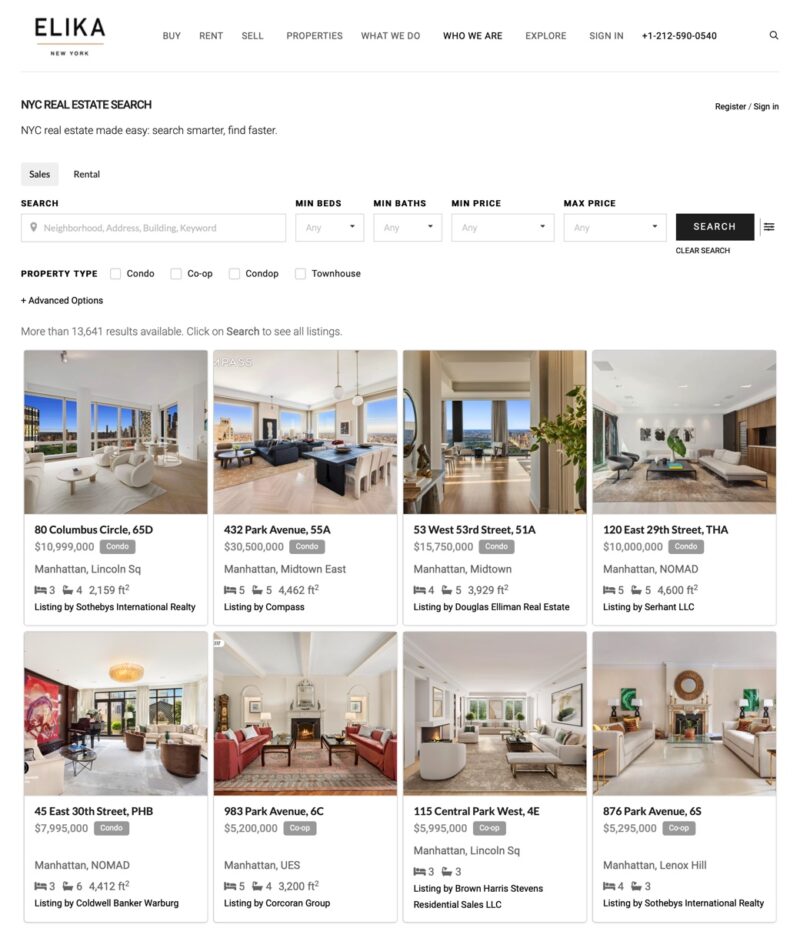Table of Contents Show
In the vast and dynamic world of real estate, multiple listing services (MLS) and real estate board proprietary databases, such as the REBNY (RLS) system in New York City, play pivotal roles in connecting agents, brokers, and buyers with available properties. While the MLS is a prevalent and widely used platform across most of the United States, the NYC area differs significantly in its reliance on the RLS as the primary listing platform. In this article, we will explore the differences between MLS and RLS listings in NYC and delve into the reasons behind the prominence of RLS over MLS in the city.
Understanding MLS ListingsUnderstanding MLS Listings
The Multiple Listing Service (MLS) is a comprehensive database that allows real estate agents to share property information and collaborate on listings. It is widely used throughout the United States, providing a unified platform for agents from different brokerages to access and view property details and offer cooperation and compensation to each other when a sale is completed. MLS listings typically include a wide range of properties in a specific region, making it a valuable resource for agents and prospective buyers. This centralized system streamlines the buying and selling process and promotes a cooperative environment within the real estate industry.
MLS platforms are operated and maintained by regional or state associations of Realtors, each serving a particular area. Real estate professionals subscribe to these MLS databases, gaining access to a vast pool of listings in the respective regions they operate. The MLS facilitates the exchange of listing information, allowing agents to work together to find suitable properties for their clients. Moreover, MLS listings often provide comprehensive property data, including photographs, property features, pricing, and historical sales information, enabling agents to make informed decisions and guide their clients more effectively.
Understanding RLS Listings in NYCUnderstanding RLS Listings in NYC
In contrast to the MLS, (RLS) is the default real estate listing platform used in New York City. The Real Estate Board of New York (REBNY), a prominent industry association in the city, manages and operates the RLS. RLS listings encompass many residential and commercial properties available within the five boroughs of NYC, including Manhattan, Brooklyn, Queens, the Bronx, and Staten Island. Real estate professionals, including agents and brokers, use the RLS to access property data and collaborate on deals. The RLS is known for its robust and accurate data, offering comprehensive information on NYC properties.
The RLS serves as a centralized database, combining listings from brokerage firms and real estate professionals in NYC. While similar in concept to the MLS, the RLS is uniquely tailored to cater to the specific demands of the city’s vibrant and fast-paced real estate market. As an exclusive platform for NYC properties, the RLS showcases diverse listings, ranging from luxurious penthouses and historic townhouses to trendy lofts and contemporary apartments.
Key Differences between MLS and RLS ListingsKey Differences between MLS and RLS Listings
To understand why the RLS is the default listings platform in NYC, it’s essential to explore the key differences between MLS and RLS listings:
Geographic CoverageGeographic Coverage
- The MLS covers a more extensive geographic area, typically including multiple cities and counties within a state or region.
- On the other hand, the RLS is specifically tailored to serve the unique and diverse NYC real estate market, focusing solely on properties within the five boroughs.
Database ManagementDatabase Management
- The MLS is usually managed by regional or state associations of Realtors, providing a cohesive system for listing properties across various jurisdictions.
- In contrast, the RLS is a proprietary database managed solely by the Real Estate Board of New York (REBNY), centralizing the control and oversight of the platform in NYC.
Cooperation and CompensationCooperation and Compensation
- The cooperative nature of the MLS encourages cross-brokerage collaboration and facilitates the sharing of commissions among agents involved in a transaction.
- The RLS also encourages co-brokering through its Universal Co-Brokerage Agreement by REBNY for collaboration within the New York City area.
Listings VolumeListings Volume
- The MLS typically hosts a higher volume of listings due to its broader coverage area, including suburban and rural regions.
- The NYC-centric RLS focuses on urban properties and may have a smaller overall listing volume than MLS databases in other regions.
Property TypesProperty Types
- MLS listings often encompass various property types, from single-family homes and condos to vacant land and commercial properties.
- In contrast, the RLS predominantly features properties within the NYC urban landscape, such as apartments, co-ops, townhouses, and commercial spaces.
Why RLS Prevails Over MLS in NYCWhy RLS Prevails Over MLS in NYC
The abundance of listings in the (RLS) system compared to the Multiple Listing Service (MLS) in New York City can be attributed to several factors unique to the city’s real estate market. The Real Estate Board of New York (REBNY) controls the RLS. It does not propagate listings to the MLS, ensuring that most licensed real estate professionals in NYC contribute to the RLS system within 24 hours of an exclusive listing agreement being signed, resulting in a more comprehensive database. These factors contribute to the RLS’s dominance as the default listings platform and the higher number of listings available in NYC compared to MLS databases in other regions.
Several factors contribute to the prominence of the RLS over the MLS in the NYC real estate market:
Unique Market DynamicsUnique Market Dynamics
- New York City boasts a densely packed urban environment with distinct neighborhood dynamics and property types. The RLS is specifically designed to cater to the diverse range of properties and neighborhoods found within the city.
Industry TraditionIndustry Tradition
- The RealPlus Online (RLS) system has deep-rooted historical significance in NYC’s real estate landscape. Over decades of use, real estate professionals have come to trust and accept the RLS as the go-to platform for NYC listings.
REBNY’s InfluenceREBNY’s Influence
- The Real Estate Board of New York (REBNY) is powerful and influential in the city’s real estate industry. REBNY’s efforts in establishing and maintaining the RLS as the default listing platform have contributed to its wide adoption among NYC real estate professionals.
Data Accuracy and StandardizationData Accuracy and Standardization
- The RLS prioritizes data accuracy and stringent listing standards, ensuring that real estate professionals and clients can access reliable, up-to-date information on NYC properties.
Citywide FocusCitywide Focus
- NYC’s real estate market is highly localized, and the RLS’s citywide focus aligns with the needs of agents and buyers seeking properties within the five boroughs.
Integration with NYC Real Estate PracticesIntegration with NYC Real Estate Practices
- The RLS has evolved to integrate seamlessly with the unique practices of the NYC real estate market. Its features, data fields, and functionalities are optimized for the city’s requirements.
What is CitySnap?What is CitySnap?
Citysnap is a real estate search portal and app that provides consumers with sales and rental listings from REBNY’s Residential Listing Service (RLS). The RLS is the primary source of real estate listings in New York City, and Citysnap is the only consumer-facing platform that receives listings directly from the RLS.
Citysnap was created as a competitor to StreetEasy, the dominant real estate platform in New York City. StreetEasy receives listings from various sources, including the RLS, but it also allows brokers, mostly non-REBNY members, to post listings that are not on the RLS. This can lead to inaccurate or outdated information on StreetEasy.
Citysnap aims to provide consumers with more accurate and up-to-date information by only displaying listings on the RLS. This means that consumers can be confident that the information they see on Citysnap is accurate and up-to-date.
In addition to providing more accurate information, Citysnap also offers several features that StreetEasy does not, such as:
- The ability to search for listings by specific amenities
- The ability to save listings and track their price changes
- The ability to get notifications when new listings matching your criteria are added
Citysnap is still a relatively new platform but has gained a significant following among New York City homebuyers and renters. If you are looking for a more accurate and up-to-date source of real estate information in New York City, then Citysnap is an excellent option.
Here is a table that summarizes the key differences between Citysnap and StreetEasy:
| Feature | Citysnap | StreetEasy |
| Listings | Only listings from the RLS | Listings from a variety of sources, including the RLS |
| Accuracy | More accurate | Less accurate |
| Features | More features, Search listings by amenities, and track price changes | Fewer features |
| Price | Free | Paid subscription required |
Final ThoughtsFinal Thoughts
In conclusion, while the Multiple Listing Service (MLS) remains the primary listings platform in most US cities, the RealPlus Online (RLS) system takes precedence in the unique and competitive real estate market of New York City. The RLS’s tailored approach, comprehensive data, and the Real Estate Board of New York’s influential role have solidified it as the go-to platform for NYC real estate professionals. By understanding the differences between MLS and RLS listings, industry practitioners can better navigate the intricacies of the NYC real estate market and leverage the most appropriate platform to serve their clients’ needs effectively. As the NYC real estate landscape continues to evolve, the RLS is poised to remain the cornerstone of real estate operations in the city, facilitating successful transactions and empowering agents and buyers alike in their quest for the perfect NYC property.








